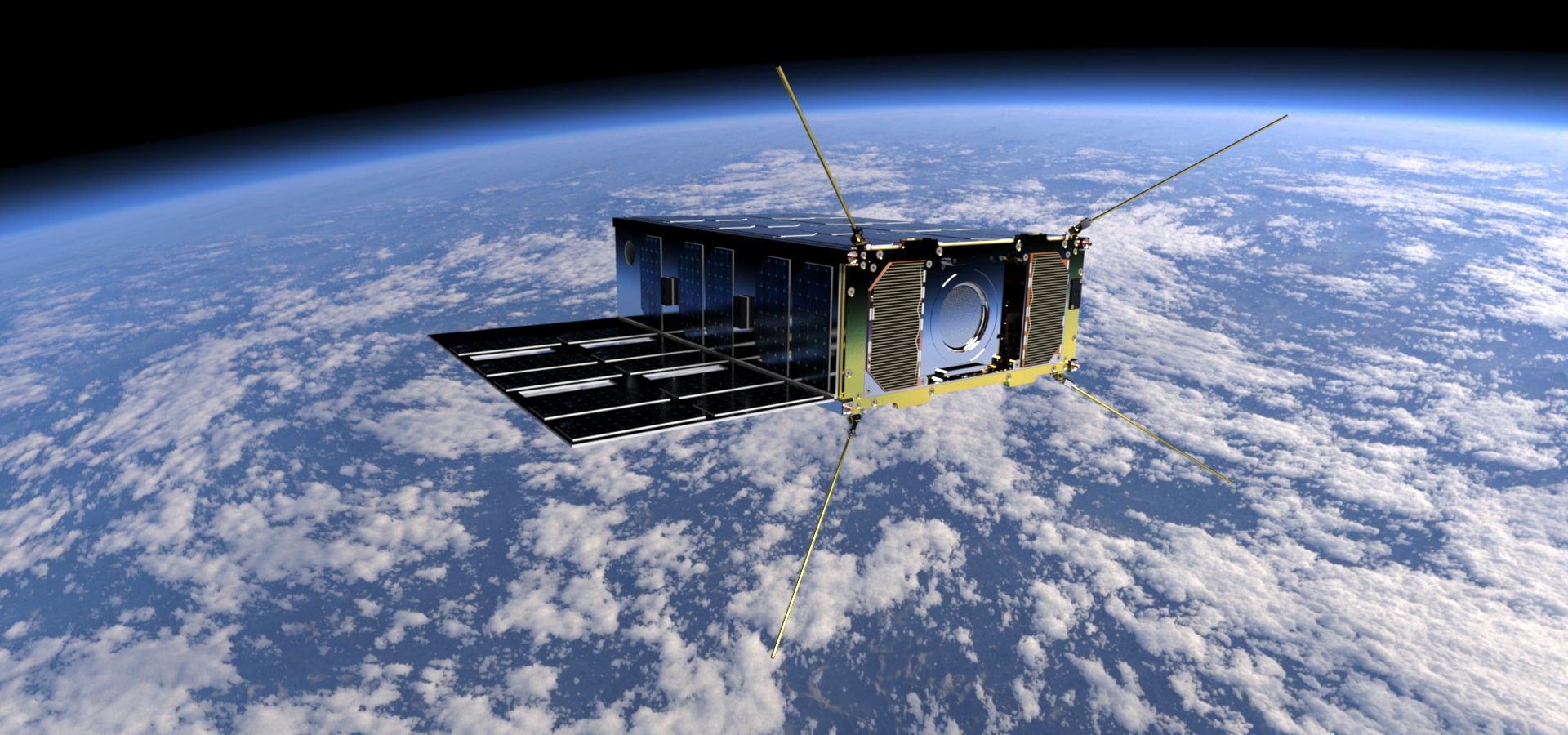Space
Accelerate space companies' ability to design a system right the first time with the required quality, reliability and safety at lower cost.
What Are the Trends Changing the Space Landscape?
Welcome to the 21st century of space exploration—a bustling arena of activity where satellite communications, human spaceflight, and deep space exploration are just the beginning. As the space industry expands beyond traditional boundaries, the potential impacts on our daily lives and future technologies are immense. At Dassault Systèmes, we are excited to be part of this vibrant transformation, enabling new mission areas and supporting the profitability of space.
- New Space
- Mega-constellations
- Space Exploration
- Geospatial Data Analytics
New Space
Accelerate New Space innovation for a better life on Earth.
Watch the replay of the New Space event with exclusive testimonials, vision sharing and best moments from industry leaders, CNES, ESA, Airbus Space & Defence, Audacia, and 8 start-ups.
New Space
How do we grow in a dynamic market unlike anything the world has ever seen before?
The dawn of the entrepreneurial space age—New Space—has been in the making for some years. Now it’s expanding more rapidly than ever, and the space industry is no longer the sole purview of government agencies.
The commercial space sector, driven by private organizations, is making giant leaps in space tourism, exploration and satellite technology. Startups and small- to medium-sized enterprises (SMEs) are disrupting the industry and capturing investors’ imagination. Rapid innovation is essential to keep up with market demand, and it’s imperative to get it right first time.
We are at the forefront of a huge wave of innovation in space. Ten years from now, we will have more than 10 times the number of satellites orbiting the earth. As the democratization of space opens up new possibilities in these areas, this race to innovate is thriving across new space startups in Europe.
The New Frontier of Satellite Technology
New Space companies must speed up innovation in satellite technology. Learn how they can successfully launch satellites into orbit right the first time.
Mega-constellations
How to deploy and manage the development of mega-constellations?
Satellites are the main component in the space economy engine, and account for about three-quarters of the $348 billion in revenues generated from space activities. They have played an enormous role in improving the state of the world, and will do even more as an explosion of technology innovation over time enables constellations of small satellites to be deployed with radical new capabilities.
Small satellites or smallsats—those under 1,320 lb (600 kg)—comprise an ever-increasing share. Upcoming constellations of small satellites in Low Earth Orbit (LEO) are expected to add some 40,000 new satellites in earth's orbit within the next few decades. This massive growth is requiring New Space actors to rapidly produce increasingly sophisticated satellites, reusable launchers, and also think about deorbitation.
The dream of a human civilization beyond earth has never been so close.
The challenge for New Space companies is to develop the versatility of their platforms while manufacturing to order at scale. In the longer term, the challenge will be to manage mega-constellations and ensure their sustainability.
Defy Limits With Space Technology
Pioneer in-space servicing, assembly and manufacturing innovations to reimagine satellite lifecycles for a sustainable space environment and economy.
Space Exploration
How do you turn science fiction into reality?
Hundreds of private companies and startups are not only driving down the cost of space travel but also fueling public interest in exploring space, mining asteroids and colonizing other worlds. Since SpaceX had its first successful launch in 2009, both venture capitalists and government funding in private space companies have been on an upward trajectory year over year. Now that suborbital flights are a reality, the next mission would be to go back to the moon and then to explore Mars. Those accomplishments in access to space will continue to energize investment and growth within the space industry.
Also, In-Space Servicing, Assembly, and Manufacturing (ISAM) is dramatically changing how we manage space assets. By focusing on sustainability and the extension of satellite lifespans, ISAM represents a significant leap towards a mature in-space economy. This initiative not only improves the cost efficiency of missions but also reduces space debris, contributing to a cleaner orbital environment.
The dream of a human civilization beyond earth has never been so close.
The New Era of Geospatial Data Analytics
Unlock the value of geospatial data analytics for data visualization and optimized decision making.
Geospatial Data Analytics
How does geospatial data analytics improve life on earth?
Private companies are launching new advanced satellites ready to visualize, collect and analyze data needed to generate insights that will lead to more efficient and optimized decision making.
Besides its traditional usage, geospatial technology is now used in everything from resource and supply chain management to mapping and urban planning and development. The space-based geospatial technology and data-collection techniques are allowing scientists to rely on meticulous measurements of ocean currents, soil moisture, air quality, and hundreds of other phenomena to predict climate changes. Such readily available data is critically important to governments working to set policy and monitor compliance with international climate pacts.
Geospatial data analytics are going to power the world. We are seeing countless new applications for space data—5G, internet for all, urban planning, sustainable energy…it will enable better decision making.
Build the Future of Space
Learn how to accelerate space programs from concept to launch:
FAQ on Space Sector
The future of space exploration faces numerous challenges, including technological barriers, financial constraints, and geopolitical tensions. However, the potential benefits—such as in-space manufacturing, asteroid mining, and interplanetary colonization—offer unprecedented opportunities. The industry must navigate these challenges with innovative solutions and international cooperation to continue its trajectory of growth and exploration.
Historically dominated by agencies like the International Space Station partners, the space industry now welcomes a diverse array of participants including private companies and startups. New players have revolutionized rocket launches and satellite deployments, making access to space easier than ever before. Dassault Systèmes collaborates with various stakeholders across the globe, enhancing their capabilities through digital continuity and the 3DEXPERIENCE platform.
While governments have laid the foundational technologies and regulations for space exploration, the private sector is now leading the way in innovation and funding. The collaboration between these entities is crucial for advancing national interests and fostering a healthy competitive market that accelerates technological development and provide global access to space.
As we venture further into space, the sustainability of our activities and climate change monitoring are becoming paramount. Initiatives focused on reducing orbital debris and promoting the responsible use of space resources are vital for preserving the space environment for future generations. Technologies that support the sustainable exploitation of space resources, such as ISAM and active debris removal, are becoming industry standards.
Also, satellites are integral to the modern space economy, accounting for a significant portion of the industry's revenue. They enhance global communication, enable precise geospatial data analytics, and are pivotal in climate change monitoring and defense. Innovations in small satellite technology and mega-constellations are set to expand these capabilities, providing comprehensive coverage and unprecedented data collection capabilities.
Discover our Customer Stories
Get insight into how Dassault Systèmes 3DEXPERIENCE platform provides solutions specifically engineered challenges thorough digital transformations.
Build the Future of Space
Learn how to accelerate space programs from concept to launch.



